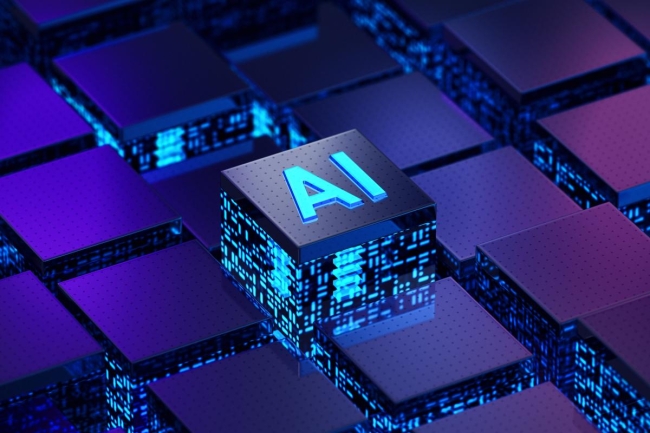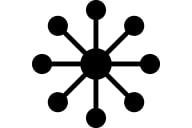You have /5 articles left.
Sign up for a free account or log in.

BlackJack3D/iStock/Getty Images
In the past few months, much electronic ink has been spilled about the threat artificial intelligence, principally ChatGPT, poses to education. Some commentators immediately evoke Stephen King levels of terror. They decry the thought of students writing lab reports, law school exam responses and even entire term papers simply by putting the essay prompts into ChatGPT, waiting a few moments and then copying the results.
As we begin to assess the potential impact of these powerful communication technologies on higher education, we encourage faculty and administrators to take a collective deep breath and, when they decide to act, to consider students who have disabilities—not also, but first. In other words: prioritize universal access.
In the worlds of education and employment, disability is often treated as an afterthought requiring retrofits and exceptions to company rules. An institution might add an unsightly ramp to the back door of an existing building or offer accommodations that placate rather than truly welcome those who have disabilities. Focusing on basic compliance solutions might enable institutions to pronounce they are in accordance with the law but that hardly moves the needle on proactive, equitable access and inclusion.
The last several decades have been characterized by significant advances in flexibility around academic assignments, with swift adjustments during the COVID pandemic. The internet, take-home exams, laptops, voice recognition, screen readers, extra time and privacy have been a boon to students who have various types of disabilities. No doubt these advances have been beneficial for all—but they’ve been life-altering for some.
One of the nice externalities of a world in which a large percentage of the population uses such technologies is the opportunity for individuals with nonobservable disabilities, also referred to as hidden disabilities, to not feel otherized or to only disclose their disabilities on their own terms. Seeing someone using speech to text, for instance, would not even elicit a second glance in a world where so many of us compose at least some of our emails and text messages by speaking into our phones. Similarly, AirPods and their ilk can aid with some types of hearing disabilities; seeing a student with buds in their ears is a surprise to no one.
Many campuses are at least inclined toward universal design, where the goal is to provide an environment, programs, structures and policies in ways that include all people, regardless of ability or disability.
Yet, the initial reactions to a foreseeable advance in AI have been to call for higher guardrails to prevent cheating. This rush to resecure academic standards may create yet another barrier for students for whom the current and emerging technologies allow fundamental access. Indeed, the effect of returning to pen-and-paper testing, requiring oral examinations or implementing other time and tool restrictions would disproportionately affect students who have disabilities. Those who might embrace these restrictive strategies as a cure-all for AI would surely concede that accommodations may be necessary. Even so, is it fair or reasonable to ask students who have disabilities to shoulder that burden?
Taking the hasty stance of rigid gatekeeping in response to AI proceeds down a path of universal dismantlement, the opposite of universal design. In universal dismantlement, imposed restrictions on technology, which may have a marginal impact on the population in general, would have a graver effect on those with disabilities. Remember that we have seen this before when people thought the internet was the end of intellectual pursuit. There will likely be a time in the not too-distant future where AI use will be as commonplace as Wikipedia, Google, paid notetakers or graphing calculators.
So, what can busy faculty and administrators do now to address this? We can start by including representatives of the disability constituency in policy development surrounding AI. Remember that this constituency is diverse; simply reaching out for a quick review to one faculty member with a visible mobility disability will fail to capture the gamut. Further, policy responses composed of technological restrictions could be isolating or exclusionary for students who have recently become accustomed to technologies and accommodations that make for a more equitable campus experience. At a minimum, we hope that this piece inspires policy makers to prioritize the needs of individuals who have disabilities in the first instance, rather than leaving them to seek accommodations or workarounds after the fact.
It is our view that we would be better served focusing on the incredible possibilities AI technology can offer in teaching and learning for all. While it may be necessary to establish some bright lines to discourage the wayward student, as well as create new pedagogies to inspire the benefits of doing one’s own work, higher education should encourage students to play with these tools and share how they use them. Extra attention should be given to the ways in which students who have disabilities use these tools—not because they need special treatment, but because, as neurodiversity advocate Temple Grandin so eloquently points out, we need all kinds of minds. Diverse experiences help illuminate pathways for universal access.
It is known that a solution to one problem often begets a new problem. We don’t deny that easy access to AI presents challenges and unanswered questions, nor do we claim that every student is ethical. However, we should be cautious that any concertina-wire fence erected to protect the integrity of academics should not be so high and so sharp that our students with disabilities find themselves—again—on the outside fighting for a way in. If, on the other hand, we view AI as a tool that enhances learning, then we may well end up in a learning environment that is more inclusive of all students.








